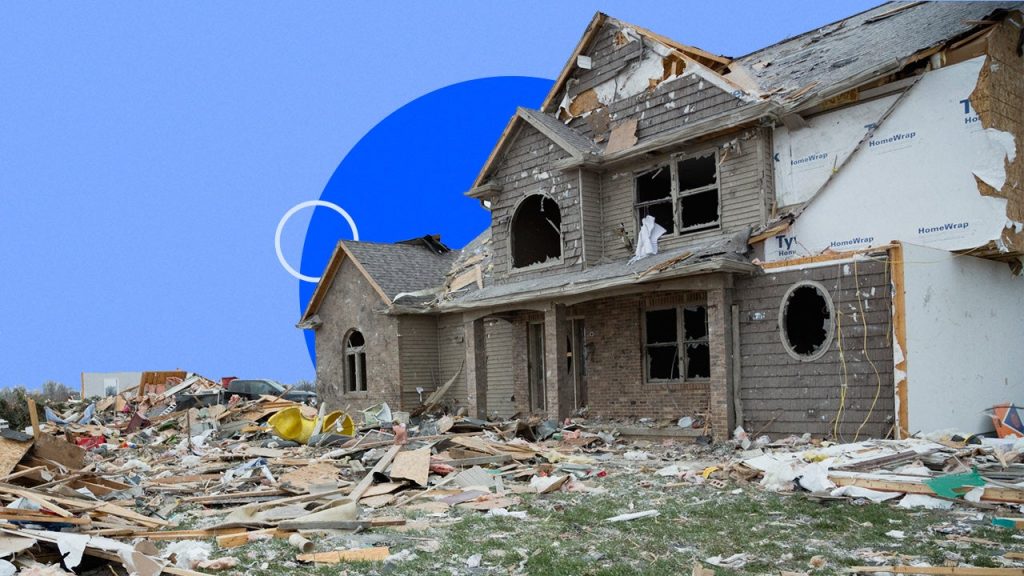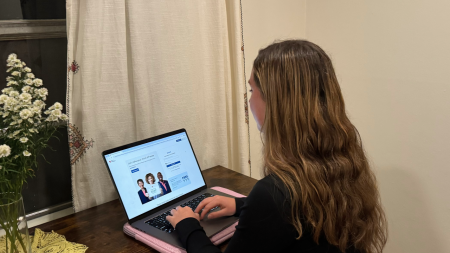Key takeaways
- Additional living expenses can cover the excess costs of living elsewhere while your home is being repaired after a covered loss.
- Loss of use coverage may pay for a hotel stay, storage fees, moving costs, pet boarding, laundry expenses or food costs.
- Most insurance policies include an automatic amount of additional living expense coverage, but you might be able to increase it.
Most home insurance policies come with certain standard coverages, many of which you may not be familiar with. One of those is additional living expenses coverage, sometimes shortened to ALE or referred to as loss of use coverage. This coverage kicks in if you are displaced from your home after a covered loss, such as a fire. Understanding what ALE is in insurance can help you determine how much coverage you might need and when you’ll be able to file a claim.
Resources for Hurricane Helene and Hurricane Milton
Between late September 2024 to early October 2024, the American Southeast experienced two back-to-back hurricanes, Category 4 Helene and Category 5 Milton. If you’ve been affected by either (or both) of the storms, here’s what to do:
-
- Listen to all evacuation orders, and do not return to your home until it has been declared safe. If you’re in Florida, you can enter your address on this map to check evacuation orders in your zone. You can also sign up for text alerts and check your county here.
- If you’ve been displaced from your home, contact your insurance company and see if you can access funds sooner. If you can’t live in your home due to an evacuation order or home damage, call your insurance company and see when you can receive money under the additional living expenses part of your policy. This can help with hotel, food and other unexpected costs. If you are already displaced or know that your home will become uninhabitable, it’s possible your company will release claims money to you ahead of time. Insurance companies are more likely to do so during widespread disasters like hurricanes.
- Call your flood insurance provider. If you have an NFIP policy, you can call 877-336-2627 to be connected with an agent. Or, if you have a private flood policy, contact your flood provider.
-
Resources for homeowners affected by Helene and Milton:
- Text “Shelter” and your ZIP code to 43362 for a list of open shelters near you
- Text “DRC” and your ZIP code to 43362 for a list of FEMA Disaster Recovery Centers near you
- If you have an iPhone 14 or newer, or your iPhone is running on iOS 18, follow these instructions to send text messages via satellite (can be available when cell towers go down)
- Red Cross Shelter finder
- FEMA Disaster Assistance Application, or call 800-621-3362. You may be able to receive up to $750 in “Serious Needs Assistance” for immediate expenses like food, water, baby formula, medication and diapers if your home is in a declared disaster area.
- Florida Baptist Disaster Relief Public Assistance: 904-253-0502 or text Helene to 27123
- Check if a hotel is pet-friendly
- Free housing from Airbnb.org
- Florida
- For Pinellas, Hernando, Hillsborough, Charlotte, Escambia, Santa Rosa, Holmes, Washington, Bay, Jackson, Calhoun, Walton, Okaloosa, Gulf, Lee, Hendry, Glades, Leon, Taylor, Wakulla, Madison, Liberty, Gadsden, Franklin and Jefferson counties, contact 211.org
- For Sarasota and Manatee counties, call 863-688-5563 or 800-282-8011
- For Pasco county, call 800-995-7604
- North Carolina: Contact 211.org
- South Carolina: Contact 211.org
- Georgia
- For Effingham, Chatham, Bryan, Liberty, Long, Taliaferro, Wilkes, Lincoln, Colombia, McDuffie, Warren, Richmond, Burke, Glascock, Jefferson and Screven counties, call 211
- For Atkinson, Bacon, Berrien, Brooks, Clinch, Coffee, Echols, Jeff Davis, Lanier, Lowndes and Ware counties, call 229-242-2208
- Florida
- Resources for Floridians affected by Milton
-
- List of shelters by county
- Check if a shelter is pet-friendly or amenable to other needs
- Call 800-729-3413 for evacuation assistance
- Call 211 for updates on school closures and sandbag distributions
- Samaritan’s Purse Hotline 833-747-1234, for free help with removing personal property, furniture, flood cleanup and more
- For a free Uber ride to a shelter in an evacuating county, use code “MILTONRELIEF”
What are additional living expenses?
Additional living expenses coverage covers costs that arise from being displaced from your home after an approved insurance claim for a covered loss. These policies can typically cover the excess costs of living incurred due to events like a fire or natural disaster. Your policy may also kick in if your home is in an uninhabitable state due to a loss of essential utilities, such as heat. Keep in mind that the policy will only cover additional expenses, not your typical expenses. For instance, if you’re staying in a hotel for a month, your homeowners insurance would cover your hotel bill but not your mortgage and light bill at your home.
Coverage limits and details under additional living expenses can vary by carrier. You can check with your insurance agent or read your homeowners policy to determine what coverage you have under loss of use. In addition to having a dollar limit, an ALE policy may also have a time limit for how long it will continue to pay your additional costs.
What is covered by additional living expenses?
Although coverage details for additional living expenses can vary by carrier, generally speaking, additional food, transportation and housing costs are typically covered as long as they are considered reasonable. If you submit a restaurant receipt from a five-star restaurant, your homeowners insurance company may not want to cover it. Your insurance company may want to look at credit card or bank receipts to make sure they understand your expenditures prior to your covered event.
Additional living expenses examples include:
- Food costs above what you routinely pay
- Laundry expenses
- Pet boarding
- Temporary rental accommodations
- Hotel stays
- Additional fuel costs
- Rental car and other transportation costs
- Storage fees
- Moving costs
What is not covered by additional living expenses coverage?
Additional living expenses coverage won’t cover the current costs you are already responsible for paying, such as childcare, insurance, mortgage, food and utilities. As a general rule, assume anything you routinely paid for before your qualifying event is not something you should submit a claim for. And, additional living expense coverage will only apply if the reason your residence is uninhabitable is because of a covered peril. Floods and earthquakes are typically not covered events because they require separate insurance.
Claimants should keep detailed records, including mileage and transaction receipts, to submit under the claim for reimbursement. If you don’t provide proof of your expenses, your claims may not be covered.
How much additional living expenses coverage should you have?
Typically, additional living expenses coverage defaults to a percentage, generally 20 to 30 percent, of your dwelling coverage, meaning that you do not need to choose your coverage amount. However, if you need to, you may be able to increase the amount of coverage or opt for a level called “actual loss sustained.” This means there is no set dollar amount on the coverage and the insurance company agrees to pay all reasonable expenses.
Some financial experts recommend purchasing as much additional living expenses coverage as you can afford since you can never predict what kind of disaster will befall you and how long you may be displaced. Other insurance professionals recommend that you keep track of the costs for hotels, rentals, restaurant meals and other likely expenses and calculate how much you might need for 30 to 60 days of displacement.
Learn more: Affordable home insurance companies
How to file an additional living expenses claim
Most insurers provide ALE relief on a reimbursement basis, so documenting your expenses is the most important thing you can do. Every company has its own specific process, but filing a claim will usually look something like this:
- Contact your insurance provider as soon as you experience a loss. Ask for a written list of what is covered under their additional living expenses coverage.
- Save every receipt for your hotel, food and other expenses while you are displaced. Maintaining them in chronological order may make the claims process faster.
- Include a notation describing each expense for your claims agent. This may help them verify whether an expense is covered and save a lot of time later on.
- Submit your receipts as directed by your insurance company. You may be able to provide them in person or online.
Once your claims are submitted, you will receive a check for approved ALE expenses.
Frequently asked questions
-
Generally, additional living expense coverage pays for excess cost of living fees you incur from being displaced from your home. This can include additional costs related to transportation, temporary housing, pet boarding, storage unit rental, laundry and food. Normal expenses, such as groceries, utilities and rent or mortgage, are not covered and should continue to be paid while staying elsewhere until you can get back into your home.
-
Yes, loss of use is the same as additional living expenses. This coverage is usually coverage D on your home policy. All the names indicate coverage under your home, renters or condo policy that provides coverage for excess costs you incur after being displaced from your home while it is being repaired after a covered loss.
-
Yes. Most homeowners insurance policies include some amount of additional living expenses coverage. However, the amount built into your basic homeowner policy may not be enough to cover your needs in case of an emergency. For this reason, you may want to check how much additional living expenses coverage you have, determine how much you might need and adjust your policy accordingly.
-
Typically, your insurance carrier will continue to pay out additional living expenses until you can move back into your home or until you meet your coverage level, whichever comes first.
-
If your additional living expenses exceed your policy limit, your insurance company can refuse to pay them. This is why it’s important to make sure you buy enough additional living expenses coverage to meet your needs. Although this coverage is often standard in a home insurance policy, you may be able to purchase a supplement called “actual loss sustained” to remove any financial caps from your claims after a covered loss.
Read the full article here












